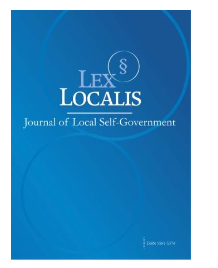CORRUPTION AND ECONOMIC GROWTH IN VIETNAM: IMPACT OF ANTI-CORRUPTION MEASURES IN EMERGING MARKETS
DOI:
https://doi.org/10.52152/5yyg0h20Keywords:
anti-corruption; economic growth; Corruption Perceptions Index (CPI); governance; Vietnam; emerging markets; foreign direct investment (FDI); institutional reform; digital governance; international comparison.Abstract
This study examines the relationship between corruption and economic growth in Vietnam, emphasizing the impact of anti-corruption measures within the broader context of emerging markets. Drawing on theoretical and empirical literature as well as Vietnamese data, the paper confirms that corruption undermines growth by distorting resource allocation, increasing transaction costs, and weakening institutional trust. Empirical evidence indicates that a one-point improvement in Vietnam’s Corruption Perceptions Index (CPI) could raise annual GDP growth by about 0.2 percentage points, while firm-level studies (Bai et al., 2017) suggest that broad-based industrial expansion can reduce bribery incidence. The analysis highlights Vietnam’s evolving legal and institutional framework especially the 2018 Anti-Corruption Law and the role of the Central Steering Committee on Anti-Corruption and its strong enforcement actions against high-ranking officials. However, short-term frictions such as project delays and bureaucratic caution have emerged. Comparative insights from China, Indonesia, and other emerging economies show that anti-corruption efforts yield long-term benefits for investment efficiency and public trust but require complementary reforms to minimize transitional costs. Overall, Vietnam’s trajectory is cautiously optimistic: sustained political will, stronger local implementation capacity, enhanced transparency, digital governance, and incremental institutional independence can transform anti-corruption momentum into durable economic and social gains.
Downloads
Published
Issue
Section
License
Copyright (c) 2025 Lex localis - Journal of Local Self-Government

This work is licensed under a Creative Commons Attribution-NonCommercial-NoDerivatives 4.0 International License.








